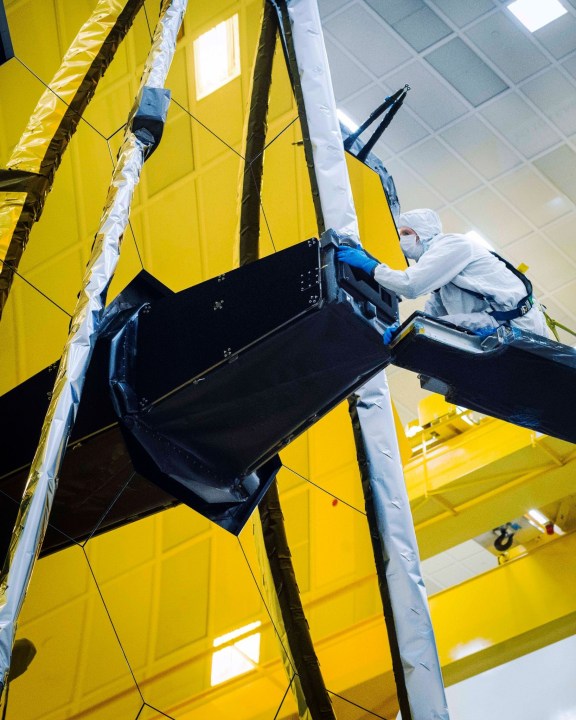
The troubled James Webb telescope has suffered a long series of delays but is finally creeping towards its launch, with the recent completion of several milestones in its final round of testing. The NASA observatory will be the successor to the Hubble telescope and once launched into orbit it will study everything from exoplanets to black holes.
The telescope has now reached three milestones in its final round of testing ahead of its planned launch later this year.
Firstly, the telescope’s “lens cap” has been removed. Technically known as the aft optics subsystem cover, this piece protects the instruments during the assembly and preparation stages and prevents any contamination from tainting them. In the image at the top of this page you can see technician Larkin Carey removing the cover so that the rest of the hardware can be folded up for its trip to space.
Secondly, Webb has a tower which telescopes up to 10 feet in length to keep the mirrors and instruments separate from the side of the observatory which faces the sun. This is in order to keep the instruments cool so that fluctuations in heat from the sun don’t affect their readings. The tower was recently deployed for the final time to check it is ready for its eventual deployment in space.
Thirdly, the telescope needs to fold up into a small volume to fit inside the Ariane 5 rocket which will launch it into orbit. This requires a complex system of folding parts, particularly for large items like the tennis-court sized sunshield. The folded sunshield will sit on top of a support called the unitized pallet structure, and now that the lens cap has been removed, the pallet has been folded up ready for launch as well.
These tests were performed at a Northrop Grumman facility in Redondo Beach, California. Once all final tests are complete, the telescope will be folded and stowed for the last time before being shipped to Kourou, French Guiana ready for its launch in November 2021.



